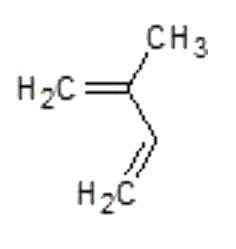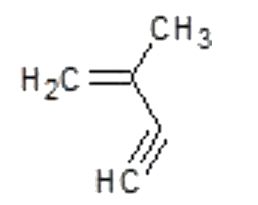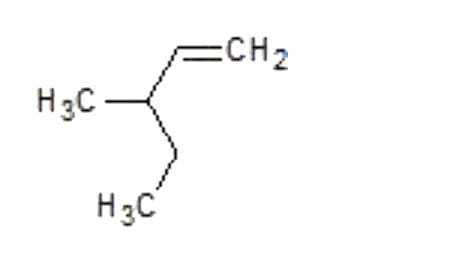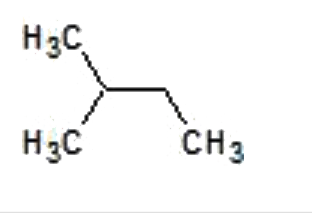An organic compound (A) (C6H10O) on reaction with CH3MgBr followed by acid treatment gives compound (B). The compound (B) on ozonolysis gives compound (C ), which in the presence of a base gives 1-acetyl cyclopentene (D). The compound (B) on reaction with HBr gives compound (E ). Write the structures of (A), (B), (C ), (D), and (E ). Show how (D) is formed from (C ).
The correct Answer is:(##ALNCHMC09(II)E01654_A01##)
Step by step video, text & image solution for An organic compound (A) (C_(6)H_(10)O) on reaction with CH_(3)MgBr followed by acid treatment gives compound (B). The compound (B) on ozonolysis gives compound (C ), which in the presence of a base gives 1-acetyl cyclopentene (D). The compound (B) on reaction with HBr gives compound (E ). Write the structures of (A), (B), (C ), (D), and (E ). Show how (D) is formed from (C ). by Chemistry experts to help you in doubts & scoring excellent marks in Class 12 exams.
Topper's Solved these Questions
- BOOK - ALLENCHAPTER - ALKENE, ALKANE & ALKYNE EXERCISE - EXCERSISE-125videos
ALKENE, ALKANE & ALKYNE
- BOOK - ALLENCHAPTER - ALKENE, ALKANE & ALKYNE EXERCISE - EXCERSISE-220videos
ALKENE, ALKANE & ALKYNE
- BOOK - ALLENCHAPTER - ALKENE, ALKANE & ALKYNE EXERCISE - EXERCISE-5[A]68videos
ALKENE, ALKANE & ALKYNE
- BOOK - ALLENCHAPTER - AIIMS 2019EXERCISE - CHEMISTRY35videos
AIIMS 2019
- BOOK - ALLENCHAPTER - ALKYL AND ARYL HALIDEEXERCISE - EXERCISE-05 (B)37videos
ALKYL AND ARYL HALIDE
Similar Questions
An organic compound (A) (C6H10) on reaction with CH3MgBr followed by acid treatment gives compound (B). The compound (B) on ozonolysis gives compound (C ), which in the presence of a base gives 1-acetylcyclo-pentene (D). The compound (B) on reaction with HBr gives (E ). Write the structures of (A), (B), (C ), and (E). Show how (D) is formed form (C ).
View SolutionAn organic compound (E)(C5H8), on hydrogenation gives a compound (F)(C5H12). Compound (E) on ozonolysis gives formaldehyde and 2−ketopropanal. Deduce the structure of the compouns (E).
View Solution
Knowledge Check
- Question 1 - Select One
An organic compound (E)(C5H8), on hydrogenation gives a compound (F)(C5H12). Compound (E) on ozonolysis gives formaldehyde and 2−ketopropanal. Deduce the structure of the compouns (E).
A B
B C
C D
D
- Question 2 - Select One
Acetoisonitrile on reaction with C2H5MgBr followed by hydrolysis, gives compound (A), which one further hydrolysis gives (B) and (C).
(B) and (C) are :AMeNH2 and EtCHOBEtNH2 and MeCHOCMeNH2 and EtCOOHDEtNH2 and MeCOOH
An organic compoud (A), C8H6, on treatment with dilute sulphuric acid containing mercuric sulphate gives a compound (B), which can also be obtained from a reaction of benzene with an acid chloride in the presence of anhydrous aluminium chloride. The compound (B) on reaction with NH2−NH2/base, gives (C).
View SolutionAn organic compound (A) C8H4O3 in dry benzene in the presence of anhydrous AlCl3 gives compound (B), the compound (B) on treatment with PCl5 followed by reaction with H2/Pd(BaSO4) gives compound ( C ) which on reaction with hdyrazine gives a cyclized compound (D) C14H10N2. Identify (A), (B), ( C ), and (D). Explain the formation of (D) from ( C ).
View SolutionPrimary alkyl halide C4H9Br (A) is reacted with alcoholic KOH to give compound (B). The ompound (B) is reacted with HBr to give (C) which is an isomer of compound (A). Write the structures of the compounds (A), (B) and (C).
View SolutionAn organic compound (A) C8H4O3 , in dry bebzene in the presence of anhydrous AlCl3 gives compound (B ). The compound (B) on treatment with PCl5 followed by reaction with H2/Pd(BaSo4) gives compound (C ) which on reaction with hydrazine gives a cyclide compound (D) (C14H10N2). Identify (A), (B) (C ), and (D) Explain the formation of (D ) from (C ).
View SolutionAn organic compound (A),C8H4O3 in dry benzene in the presence of anhydrous AlCl3 gives ,compound (B). The compound (B) on treatement with PCl5 followed by reaction with H2/Pd−BaSO4 gives compound C, which on reaction with hydrazine gives a cyclised compound (D) of formula C14H10N2. Identify (A),(B),(C ) and (D). Explain the formation of (D) and (C ).
View SolutionAn organic compound A(C6H6O) gives dark green colouration with ferric chloride. On treatment with CHCl3andKOH, followed by acidification gives compound B. Compound B can also be obtained from compound C on reaction with pyridinium chlorochromate (PCC). Identify A, B and C
View Solution

